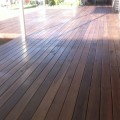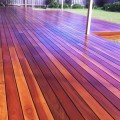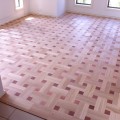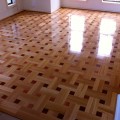Sanding and coating
At Halych Holdimg we don’t just sand and polish your newly installed timber floors but we understand it is an art in itself. It requires the right methods, superior coating products and indepth knowledge to keep your floors in impecable condition. That is why we offer 5 types of coating finishes: Penetrating oils and waxes, curing oils and alkyds, oil modified urethane’s, and polyurethane’s. Each finish has it’s unique properties and usefulness and thus performance parameters such as durability or resistance to wear can vary significantly within and between categories. We view it as our responsibility to advise you which coating is best suited for your home and your desired feel, so that you can be 100% satisfied with the result. Our team has a high standard of workmanship and a keen eye for detail, ensuring your floors not only look and feel great but are in their own right works of art.
To help you understand the types of finishes we offer and the result they will have please view our list below:
Penetrating Oils and Waxes
These are blends of natural oils and waxes which penetrate the timber surface to provide a rich colour, enhancing the timber grain and natural characteristics. It is the natural subdued look of the coated timber that is often the basis of selection and these finishes are generally recognised as the traditional or natural finishes. Curing in cold weather is slow and this may require consideration. Regular application of metalised acrylic polishes are used as part of the maintenance requirements to prolong an attractive appearance that darkens with age. Hard waxes differ in that they not only penetrate but also leave a hard film of wax on the surface, thereby reducing maintenance requirements.
Oil-Based Finishes – Curing Oils and Alkyds
Curing oils such as ‘Tung’ or ‘linseed’ are usually selected because of their lower cost and ability to produce a rich timber colour. Gloss levels vary from high gloss to satin and they are not prone to edge bonding. Similar to penetrating oils these finishes are slow curing in cold weather, will darken with age and metalised acrylic polishes are a necessary part of ongoing maintenance activities. Alkyds are produced from reacting curing oils with a synthetic resin and this results in improved durability and reduced maintenance activities.
Oil Modified Urethane’s (UMO’s)
These spirit based solvent borne coatings combine an oil with a smaller amount of a urethane. The higher the urethane proportion, the less the oil properties such as flexibility but the higher the durability. Gloss levels vary from high gloss to satin. All UMO’s darken with age and their slow curing in cold weather needs to be considered. These mid range cost coatings are often selected as they are of intermediate durability, are not prone to edge bonding and are isocyanate free.
Polyurethane – Solvent borne
This coating type in the 1 pack moisture cure and 2 pack varieties provide the highest durability and film build of all coating types as well as the highest gloss levels. Gloss levels range from ultra high gloss to matte and some darken less with age. However, there is a strong solvent smell on application and due to the isocyanates present additional precautions are necessary until the coating has cured. These intermediate cost coatings are often selected as they provide the best durability resulting in low maintenance, can provide a very high gloss and generally provide trouble free application. Care is however necessary regarding their edge bonding potential which can cause irregular gapping or split boards in floors. Currently, this type of finish is commonly used in Australia.
Polyurethane – Waterborne
This has the widest selection of sub-categories resulting in a spread of properties with durability from poor to arguably as good as solvent borne polyurethane. Greater care is therefore necessary in selection noting that those without acrylic provide higher durability. They are available in one and two pack options, provide a finish from matte through to gloss and generally darken little with age. These coatings are often selected due to the absence of any strong solvent smells on application and because they are not prone to edge bonding. Product cost is however high and they can provide a lighter timber appearance depending on the sealer and coating used. Rapid shrinkage can also result in light coloured lines at board joints. These finishes have developed significantly over recent years.
This information has been sources from ATFA Consumer Guide to Timber Flooring, V1 – Sept 10 – visit website








